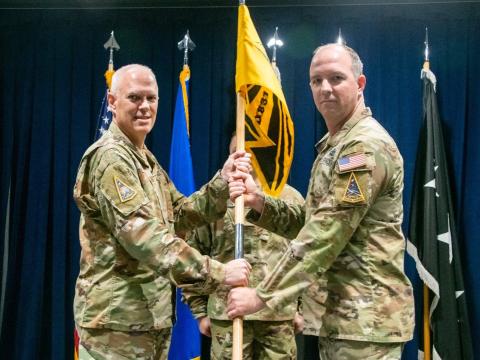Disruptive By Design: A Data-driven Army
While listening to a variety of Army leaders ascribe to the benefits of data-centricity, I started asking myself what this really means and why is it difficult to move toward that as an end-state. Army conferences, seminars and media sessions are replete on this topic—the move to “data at the speed of need,” “data-informed decision-making,” and my favorite—“data as the new ammunition.” As it relates to information technology and resilient communications, this is a topic of great and immediate interest to anyone working with the Army.
After barely making the transition from a “network-centric environment” to the evolved “unified network environment,” it seems now that the Army avows it is at an “inflection point” and urgently needs to move to a digitally enabled, data-driven Army. This might be the current Holy Grail, but what does this actually mean for the future of warfighting? This topic can be divided and subdivided into a multitude of questions and discussions upon which one could wax eloquent for hours. A few key thoughts:
• What is required for data-centricity to be feasible?
• What adaptations to existing security and operational requirements are necessary to keep the massive amounts and types of data available to the Department of Defense-protected?
• What are the repercussions of slow development and acquisition cycles?
• How does the Defense Industrial Base use innovation to introduce this model across government and industry?
• Will the need for unified environments ever truly go away, especially when speaking about the need for coalition partnerships in many warfighting scenarios?
So what is disruptive about this? Having a unified network of data and information available at the warfighters’ fingertips would be game-changing and the best way to keep on par or ahead of nation-state enemies.
Here are five thoughts for the journey:
• It is not either/or. A data-driven environment needs a unified network to move the information from edge to enterprise and back.
• It requires a programmatic shift from “need to know” to “need to share.”
• Digital investments are required: from backend information technology to battlefield—with requisite zero-trust security.
• This takes new skills, culture and processes, all of which are dependent on a digital-versed workforce and leadership (yes, in that order).
• As the world rapidly becomes more contested and complex, focus, funds and fortitude are required to achieve a “digitally enabled, data-driven” Army.
I asked my compatriot Greg Garcia, former Army chief data officer and deputy chief information officer, if he could share some added insights. He told me about the great work in moving the Army to this data-driven decision-making philosophy. He conveyed the Data Standard Requirements the secretary of the Army signed, and he relayed some keen truths for achieving this next-generation warfighter data-driven milieu. These cover the four key tenets of data: be secure; identify data sources; catalog data; and advocate for data exchange. The baker’s dozen of principles included cybersecurity, data sources, data catalog, data exchange and mapping, data life cycle management, data visibility, data interfaces, code reuse, inter-process communication, architecture support, all net-centric data services, DoD Information Network (translate supports the Unified Network processes), and supportability. In this proclamation, Army senior leadership aim to recognize this shift to rapid technological change and adapt the Army to see data and leverage the advantage in platforms, systems, applications and unified networks to bring decisive military advantage. In simplest terms, make data the ammunition of the future fight.
In conclusion, a unified network for information is key to the success of a data-driven environment from the enterprise to the tactical edge, and from senior decision-makers to soldiers deployed around the world, and it takes the Army, industry teams and academia to help solidify this change. What an awesome journey to manage together!
Alisha Kelly is director of Business Development and Capture at Trace Systems. She is also co-president of AFCEA International’s Emerging Leaders, representing the National Capital Region.




Comments